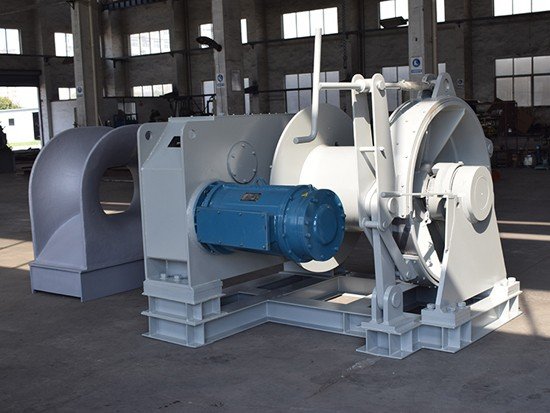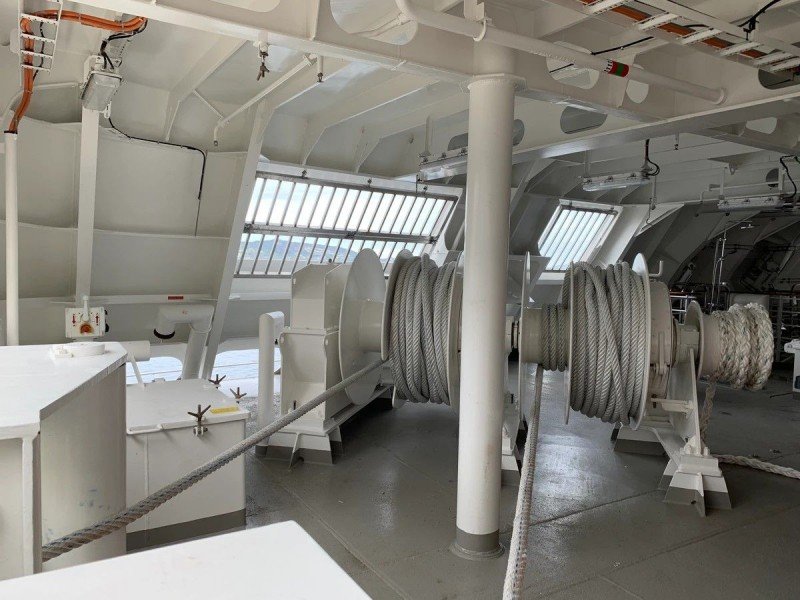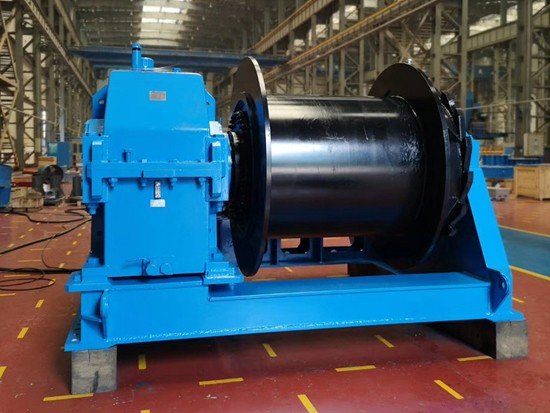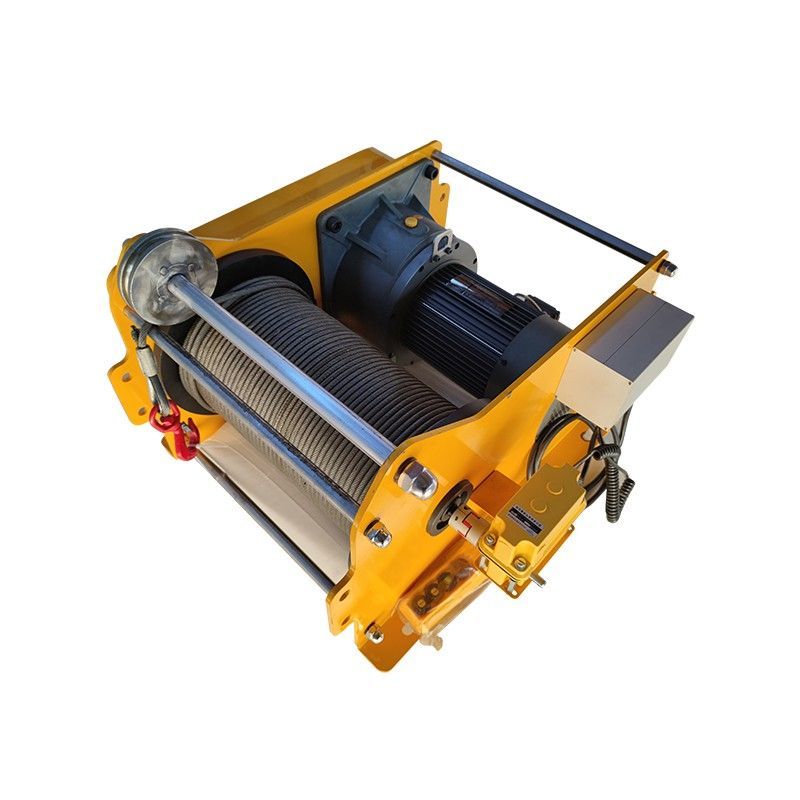Winches are essential mechanical devices used on ships for a variety of purposes, including anchoring, mooring, towing, and lifting heavy objects. Depending on the operational requirements, ships rely on different types of winches, each designed to handle specific tasks and loads. Whether you are considering winches for your own vessel or for commercial marine use, understanding the various types, their applications, and their operational characteristics is key to making the right choice. This guide explores the different types of winches on ships, highlighting their functions and important considerations when selecting the best option for your needs.
Types of Winches on Ships
Winches on ships can be categorized based on their functionality and power source. Let’s delve into the most commonly used types:
1. Ship Anchor Winch
An anchor winch is used to raise and lower the anchor, typically with a speed of about 10m/min. There are two primary types of anchor winches:
- Anchor Chain Winch: Designed to handle heavy steel chains that secure the ship in place.
- Anchor Rope Winch: Typically used in cases where a synthetic or steel rope is employed instead of a chain.
When purchasing an anchor winch, it’s crucial to consider the anchor weight, the diameter and length of the anchor chain, or the diameter and length of the wire rope required for the operation. KRC Winches provides detailed specifications to guide you in choosing the right anchor winch.

2. Ship Mooring Winch
Mooring winches are used to secure the ship to a dock or another vessel during port operations. They come with several functionalities, including drifting, support, and positioning during loading and unloading. These winches can also adjust the tension to compensate for any movement caused by the ship’s vibration.
Some common variants of mooring winches include:
- Electric Mooring Winch: Powered by electricity, these winches are known for their simple system, low operating cost, and ease of maintenance.
- Hydraulic Mooring Winch: Used for heavy-duty operations, hydraulic mooring winches offer high strength and durability.
- Single Drum and Double Drum Mooring Winches: These are suited for different operational needs, with double drum winches providing additional capacity and versatility.
For more information on electric and hydraulic mooring winches, visit KRC Marine Equipment.

3. Anchor Mooring Winch
As the name suggests, the anchor mooring winch combines the functions of an anchor winch and a mooring winch. This dual-purpose winch can perform both anchoring and mooring operations, offering a compact and efficient solution for vessels.
Available in different configurations, such as:
- Single Gypsy Single Drum Winch
- Double Gypsy Double Drum Winch
- Single Gypsy Double Drum Winch
- Double Gypsy Single Drum Winch
These winches are designed for vessels that need a combination of anchoring and mooring capabilities. For more details on anchor mooring winches, check out KRC’s Winch Solutions.
4. Towing Winch
Towing winches are mounted on ships to tow other vessels or objects. These winches are designed for tasks that require significant pulling force, with typical speeds of around 10m/min.
There are two main types of towing winches:
- Electric Towing Winch: This type of winch is easier to install and maintain, with low operational costs.
- Hydraulic Towing Winch: Hydraulic towing winches provide greater durability and are more suitable for heavy-duty operations requiring a constant power supply.
Depending on your project requirements, you can choose between electric or hydraulic towing winches to ensure optimal performance. To explore the various options for towing winches, visit KRC’s Towing Solutions.

5. Capstan
Capstans are small but powerful winches commonly used for mooring and anchoring on the deck or on shore. They are compact and versatile, making them ideal for operations where space is limited. Different types of capstans include:
- Electric Capstan
- Hydraulic Capstan
- Vertical Capstan
- Horizontal Capstan
- Anchor Capstan
- Mooring Capstan
Capstans typically have a rated load capacity ranging from 1T to 10T and can have multiple speed settings, such as single speed, double speed, or triple speed, depending on operational needs.
To understand more about the different types of capstans and their applications, check out KRC’s Capstan Range.

Factors to Consider When Choosing a Winch for Your Ship
Selecting the right winch for your vessel involves considering several key factors. Here are some crucial points to evaluate before making a decision:
- 1. Purpose and Working Environment
- Before choosing a winch, understand the specific tasks it will be used for. Are you primarily looking for an anchoring solution, mooring capability, towing support, or lifting heavy objects? The winch’s purpose will influence the type of winch you need. Additionally, consider whether the winch will be used on board, at port, or on land, as this will determine its operational environment.
- 2. Rated Load or Pulling Force
- The rated load or pulling force required for the winch depends on the size of the vessel and the load to be moved. Ensure that the winch can handle the specific weight and force necessary for your tasks.
- 3. Drum Capacity
- Evaluate the length and diameter of the rope or chain that will be used with the winch. Different winches offer varying drum capacities, and it’s important to choose one that can accommodate your requirements.
- 4. Speed
- The speed of the winch is another critical factor. While most marine winches operate at speeds around 10m/min, certain tasks may require specific speed adjustments. Consider whether you need a winch with variable speed control.
- 5. Power Source
- The power source of the winch is another important consideration. Winches can be powered by electric, hydraulic, or diesel engines. The choice depends on your vessel’s size, infrastructure, and financial considerations.
- 6. Additional Features
- Some winches come with added features such as rope spooling devices, warping heads, rope length measurement, and tension measurement systems. Depending on your project’s complexity, these features might be essential.
Conclusion
Choosing the right winch for your ship depends on the specific tasks you intend to perform, the load capacity, the speed required, and the environment in which the winch will operate. From anchor winches to towing and capstans, there is a wide variety of winches to meet the unique demands of maritime operations. By understanding your needs and considering the factors mentioned in this article, you can select a winch that enhances your vessel’s efficiency and performance.